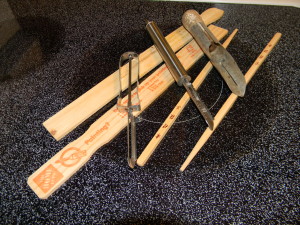I was a bit surprised by the number of e-mails I received about Naturally Probiotic Foods. It seems that a lot of people are having the same problems as me with our highly processed foods today. One of the main questions I was asked is whether I feel that pasteurization is a bad thing to do. That’s a loaded question. Most food questions come with trade-offs. Pasteurization helps the milk last longer and kills potentially harmful bacteria. When you get raw milk, you must consume it within 7 to 10 days, which is a much shorter time than pasteurized milk. In addition, people with compromised immune systems aren’t good candidates for raw milk because bacteria that would never cause a problem in a healthy person could cause problems with someone who doesn’t have a fully functional immune system. The immune system is so important, so people without a fully functioning immune system should consider looking into different ways to increase immune function. There are supplements out there that could increase immune function, like lypo spheric vitamin c, for example. That sort of supplement should help people to increase the strength of their immune system, helping them to fight off any bacteria that could come from drinking raw milk. You must also know the farmer or store from which you get the milk. It’s way too easy for raw milk to contain substances that will make you sick. All this said, a lot of people the world over have drunk raw milk literally for centuries and we’re still here. There is a definite trade-off to consider though, so when getting raw milk, shop smart.
Many other items you buy are also pasteurized. For example, it’s entirely possible that the eggs you buy from the store are pasteurized to kill any bacteria on the surface of the egg. When you buy fresh eggs from a farmer or a store that provides such eggs, you do take a small chance of getting sick. The same can be said of any other unpasteurized product you buy. However, to be human is to risk getting sick and you can’t avoid all contact with bacteria. Society has become increasingly germophobic over the years and even that choice creates trade-offs. For example, it’s now thought that a lack of exposure to various germs and bacteria are actually causing problems with children in that they’re exhibiting symptoms like additional allergies. The point is that you must make a smart choice based on your own personal needs-I truly can’t tell anyone whether raw products, such as milk and eggs, are going to cause problems or will help with specific needs.
A number of people have asked what I think about homogenization. I know that when I was growing up, the milk I bought from the store would separate. It was possible to see cream at the top of the glass bottle at some point (often scooped off for coffee and so on). Today, milk doesn’t separate in most cases because of homogenization. Logic tells you that if the milk normally separates (breaks down) and now it doesn’t, that your body is probably going to have a harder time digesting it as well. A number of articles online bear out this fact. However, homogenized milk can cause other problems. For example, a number of sources claim that it can promote cancer. Because I’m not a researcher into this kind of information, I can’t verify these claims, but in reading the information, it does tend to make sense. Over-processing food has certain negative effects and you need to think about the pros and cons of buying it. I found other sites that state the contrary, that homogenization makes milk more digestible. My personal experience doesn’t bear this claim out. In drinking milk that is just pasteurized, I still experience fewer digestive problems than when the milk is also homogenized. However, I’m not you and you are the one who needs to make the required test.
A number of people also asked about alternatives, such as goat’s milk. I personally love goat’s milk as long as it’s cold and not over five days old. After that magic five day mark, the goat’s milk develops a “goaty” taste, some people call it a musky taste. Theoretically, goat’s milk (at least) is more digestible than cow’s milk. At least, that’s the case for me. I can drink goat’s milk without using Lactaid (or a similar product). Again, you need to know the source of your goat or sheep milk in order to be certain that it’s safe to drink. Unlike cow’s milk, goat’s milk actually freezes really well, so when I’m drinking goat’s milk, I keep only enough in the refrigerator for three days and freeze the rest.
Raw foods, those that haven’t been processed, can contain natural probiotics that make them easier to digest. This may, in turn, help the immune system work to its best level in combination with Quantum Health supplemental support. Humans have been consuming these foods for centuries without a problem and our bodies are naturally attuned to them. However, processing does have benefits and you truly can’t ignore these benefits. For me, I find that the raw foods work best because of the probiotics they contain. Your experience is likely to be different from mine. Keep those e-mails coming to [email protected].

